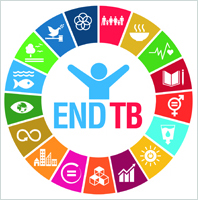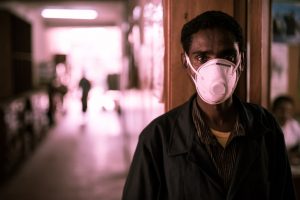
While some gendered aspects of tuberculosis are beginning to be better understood, there is limited information and focus on addressing certain risk factors and vulnerabilities that impact men and women differently. TB now kills more people than any other infectious disease, and evidence suggests that women may be more vulnerable to forms of extra-pulmonary TB, including genital TB, which is under diagnosed, and also that it is more difficult to diagnose women than men for pulmonary TB, suggesting there may be more undiagnosed cases in women.
Women are at high risk of tuberculosis in some regions. HIV increases the risk of TB infection—women living with HIV are 10 times more likely to develop TB than HIV-negative women. Women who are co-infected with HIV and TB are at extremely high risk of poor health outcomes and mortality and are more likely to die than co-infected men, especially in Africa. These risks are especially concerning for pregnant women in sub-Saharan Africa where TB and high co-infection rates significantly increase risks of maternal mortality and morbidity. Pregnant women living with TB risk having premature babies and their babies are six times more likely to die shortly after birth, than babies of TB-negative women. Pregnant women co-infected with HIV and TB are at extremely high risk of maternal mortality—they are more than twice as likely to die than pregnant women with TB who are HIV-negative.
While co-infection risks have begun to be addressed through programming, including that which facilitates access to linked TB and HIV testing and services, such programmes should be more widely available and there is a need for more data on gender vulnerabilities. For example, some research suggests that men are more vulnerable to pulmonary TB, while other research suggests that it is more difficult to diagnose TB in women due to differences in symptoms and lesion size on the lungs (making TB more difficult to diagnose). Further, there are social and cultural factors present in many developing countries which impose barriers to TB prevention, diagnosis, treatment and care for girls and women, including stigma, discrimination and gender stereotypes which may deter health seeking behavior. If TB services are not provided for free, families may be unable to pay, and if there are limited financial resources, they may be allocated to male family members over females. In some contexts, social determinants of health and TB, such as nutrition, sanitation, education and employment may disproportionately increase risk factors for girls and women. Since malnutrition is a significant risk factor for TB, undernutrition may increase girls’ susceptibility to TB and other poor health outcomes in low resource settings, depending on allocation of scarce resources.
Globally, more men than women have been diagnosed with TB. In some regions, this is closely linked to occupational hazards surrounding mining which is often a predominantly male profession. For example, in Southern Africa, TB is a significant public health threat and extremely high TB rates are in large part attributed to the mining industry. Mine workers in sub-Saharan Africa have some of the highest TB rates in the world—over 867,000 new cases each year are linked to mining. The exceedingly high rates of TB are clearly linked to a many factors, including exposure to silica dust, HIV infection, and poor working and living conditions. While there has been increased advocacy and a number of interventions and efforts to address these conditions and TB within the mining sector, private industry interests often override human rights and public health concerns and too little has been done to ensure occupational hazards are reduced or to ensure workers have access to TB prevention, testing, treatment and support. Additional complexities arise given the number of migrant workers within the sector, who are at heightened risk of TB and, as is the case in many countries in the world, face onerous barriers accessing quality health services.

[photo credit: Nobody Left Behind]
Gender is but one example of an aspect of TB that is inadequately understood and addressed. Other vulnerabilities and TB risk factors include incarceration, migrant status, poverty, sanitation, malnutrition, among others, which must urgently receive attention if we are to reduce new TB infections, deaths, poor health outcomes, drug resistance, and the catastrophic costs of TB. Tuberculosis is a stark example of the extent to which the rights to health and science have not been realised in developing countries and the vast health and social inequities between countries and within them. Perhaps the rapidly increasing tuberculosis rates and ever-increasing cases of drug-resistant TB will be cause for meaningful and effective international, regional and state action to address social inequality and discrimination.



